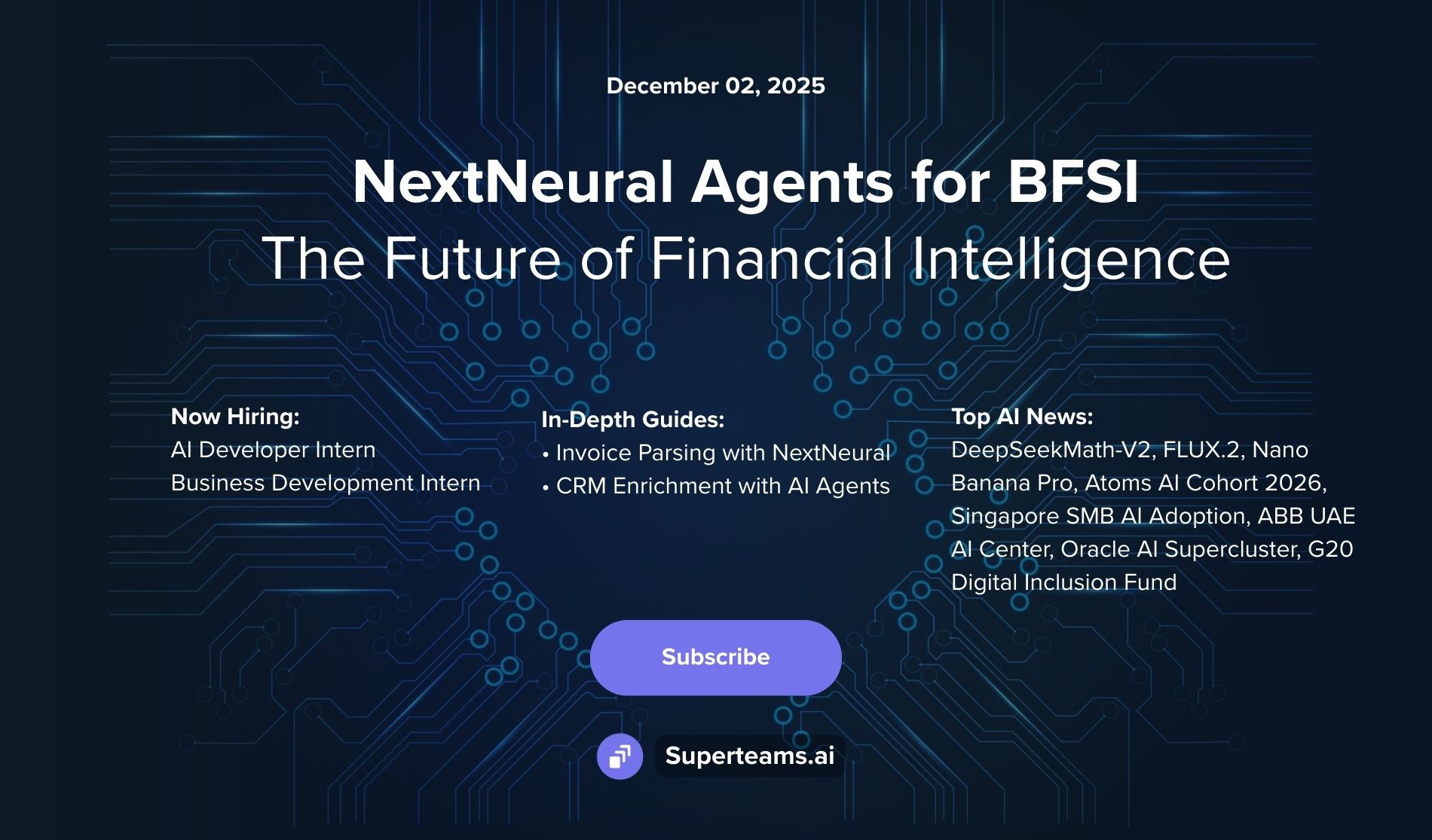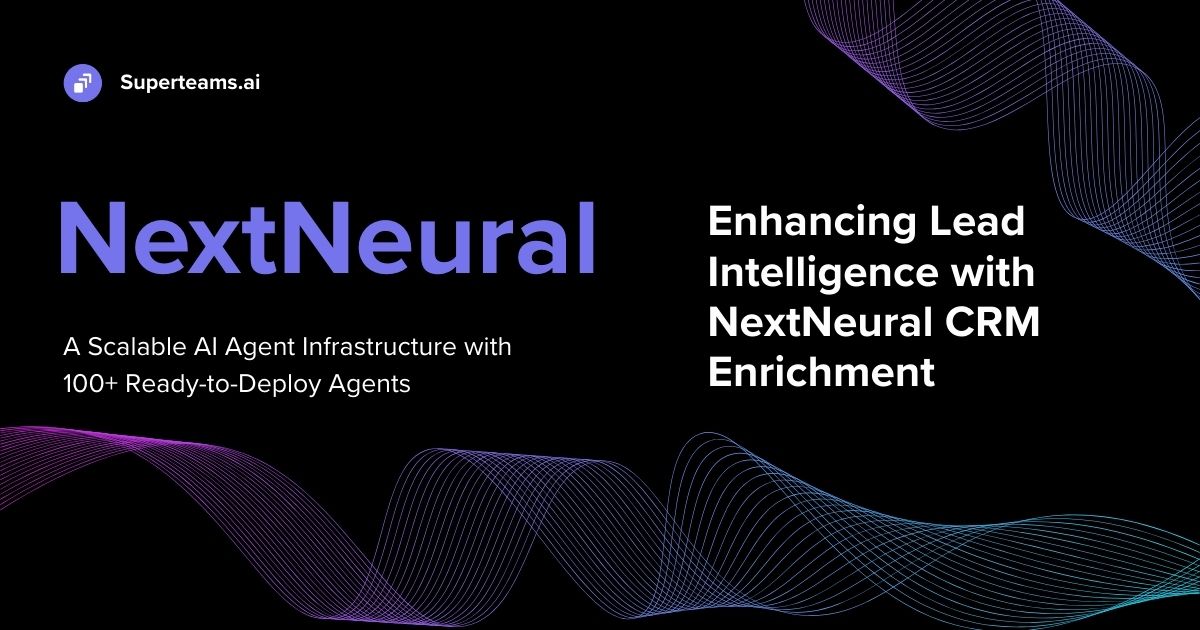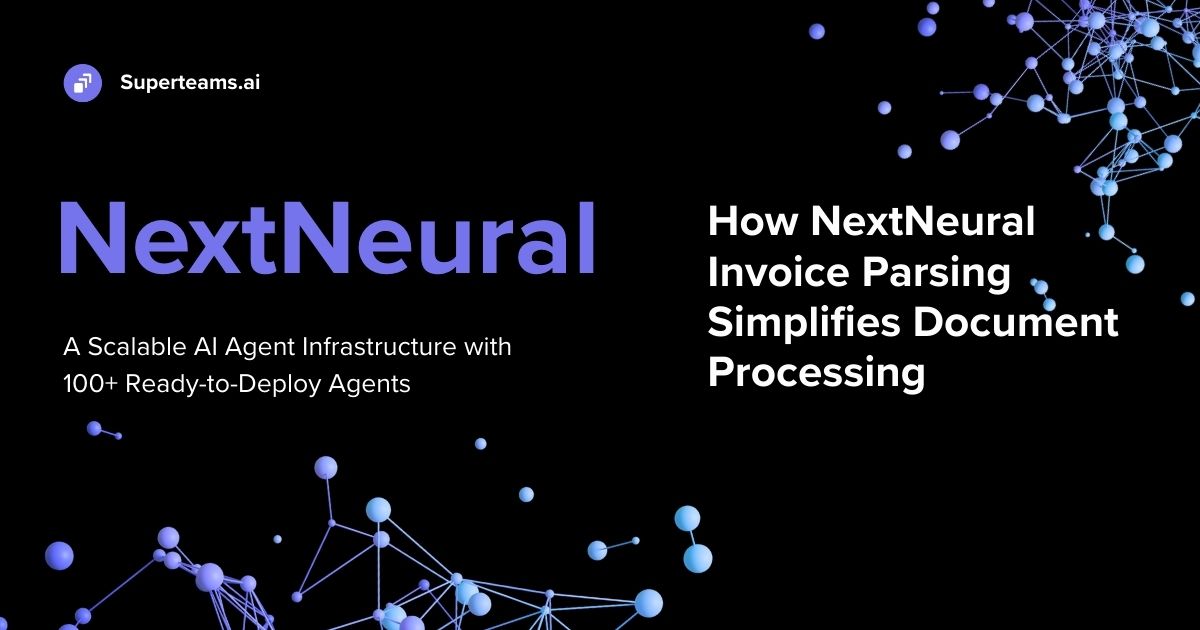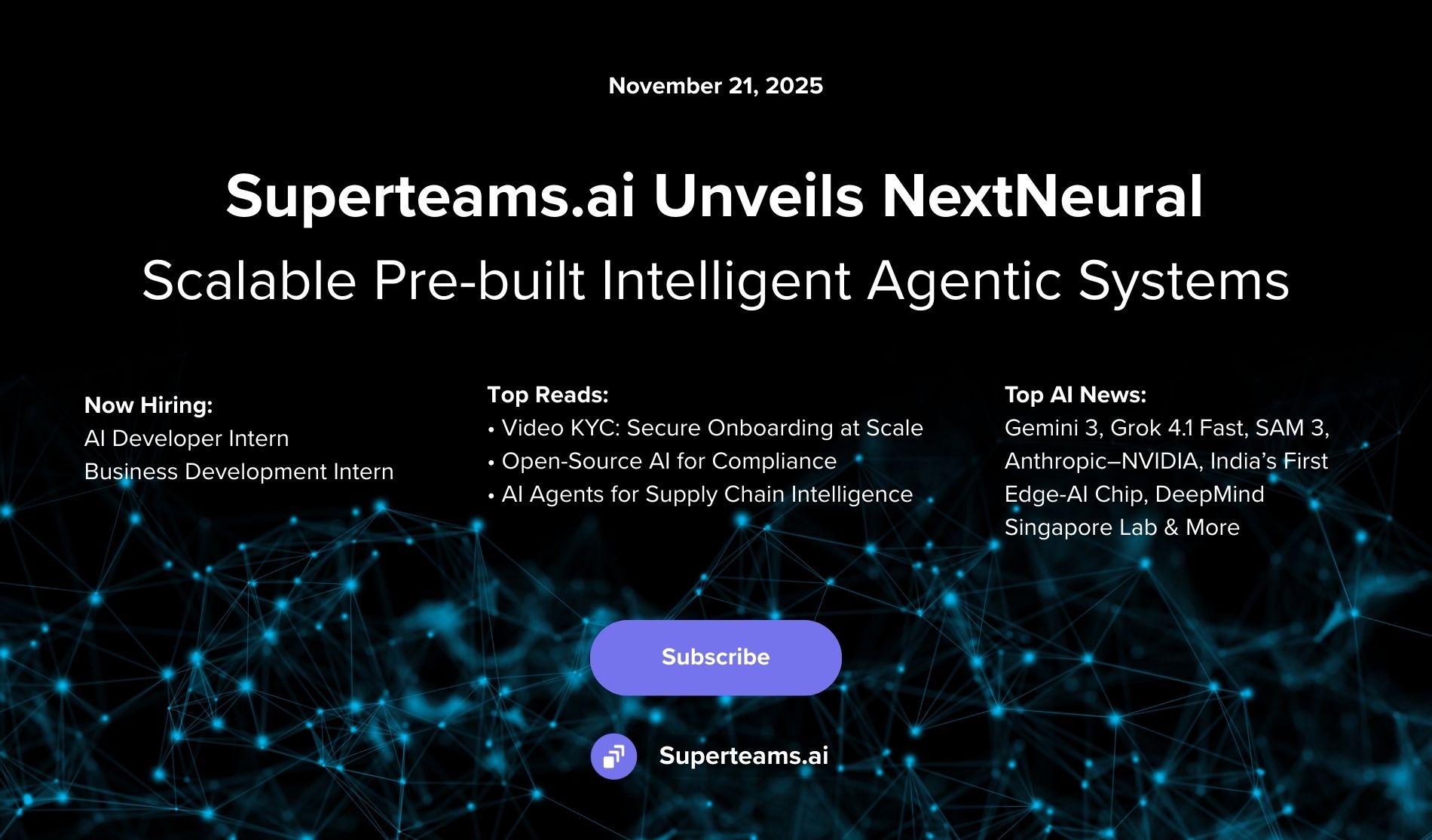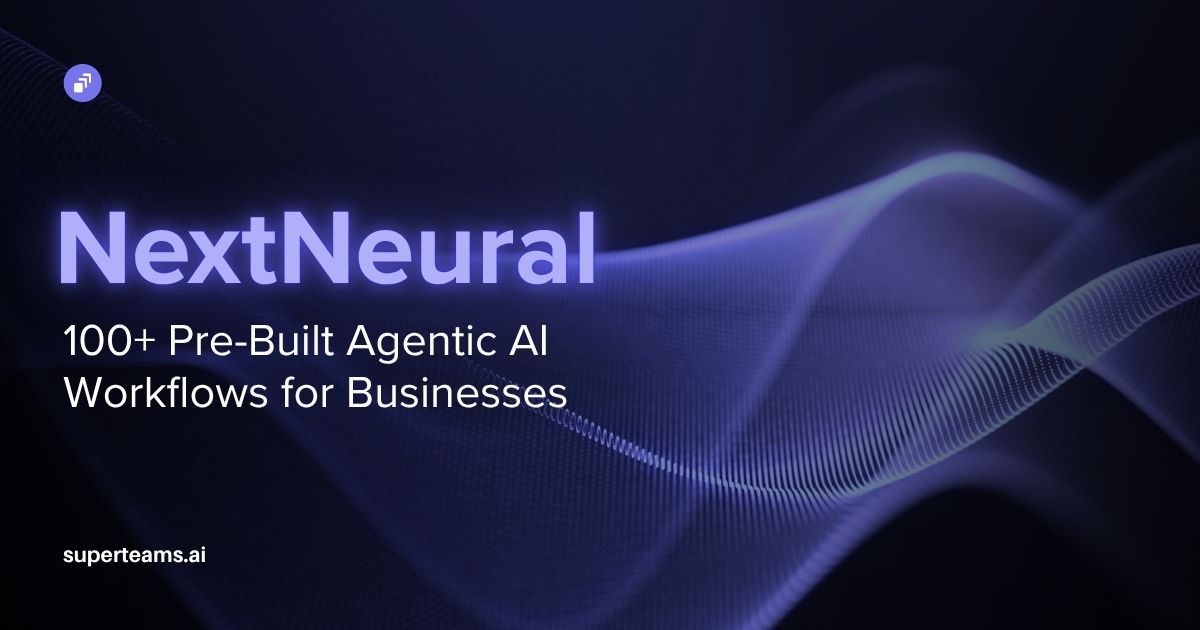A Guide to Incorporating AI Agents In Your Product Stack
In this blog, we will explain the typical architecture of any AI agent, and how you can build them from scratch and customize them around your product workflow

AI agents are systems designed to perform tasks autonomously by reasoning, retrieving data, and taking actions. Their unique ability is to autonomously reason and act on complex tasks, and this makes them powerful paradigms to incorporate in product workflows.
Typically, AI agents can be integrated into a product stack to enable dynamic, automated workflows—which can help in streamlining operations, decision-making, and user interactions. This has led to companies turning to building AI agents for personalized customer experiences, process automation, and intelligent insights. Reports have stated that the AI agents market has the potential to expand from $5.1 billion in 2024 to $47.1 billion by 2030. Nearly every company using a technology stack will be touched in some way.
Question is, what tools do you need to build an agent? Do you need specific frameworks? SDKs? Cloud platforms that help with agentic orchestration?
Our contention: you don’t need any. In this blog, we will explain the typical architecture of any AI agent, and how you can build them from scratch and customize them around your product workflow. TLDR; you can stick to good old Python (or whatever stack you currently use), and add a few essential building blocks to achieve any outcome you can imagine.
Let’s start!
What is an AI Agent?
An AI agent is a system designed to perform tasks autonomously by combining reasoning, data retrieval, and action-taking capabilities. This is a paradigm shift over how we have built technology in the past, where you had to program the ‘logic’ or the ‘intelligence’.
With an AI agent, you use a powerful large language model (LLM), which has the capability to reason over your data or respond to queries, and the LLM’s responses are used to decide on tasks execution without direct human intervention.
Let’s look at this with an actual business example. Imagine you run an e-commerce platform or retail company. By integrating an AI agent, you can automate the process of handling customer queries about product availability.
For instance, when a customer asks,
"Is this product in stock?",
…the AI agent can autonomously retrieve inventory data, interpret the query, and respond with accurate information. Beyond that, it could also cross-sell by suggesting complementary products or automatically initiating a restock order if inventory levels are low. It can also add the query to historical queries so that one can analyze and improve recommendations in the future.
In simple terms, agents need to use LLMs with reasoning capabilities, in order to decide the workflow it needs to execute.
Agentic Reasoning Relies on LLMs
Since the agent’s reasoning is powered by LLMs, your agent will be as powerful as the underlying model. LLMs are
In fact, the recent release of DeepSeek-R1 has clearly demonstrated that true reasoning will increasingly be achieved at the model level.
There are several models that are already available, which have demonstrated powerful reasoning capabilities. Amongst the open models, you have DeepSeek-R1, which is currently a SOTA (state-of-the-art) model in this domain. You also have platform models like OpenAI’s o1 and Claude-3.5 Sonnet. We would always suggest going with open-weight models, as you keep control of your data and avoid platform lock-in.
Now, once you choose your LLM, you have to ensure that you can ‘steer’ it to respond in a format that you can parse and use to perform actions. There are several ways of achieving this. Once you have the output in a structured Pydantic or JSON format, you simply use it to program your workflow or actions you call.
Agentic Workflows Are Simpler Than You Think
Therefore, most agentic workflows are just a smart combination of:
- Data Retrieval: Extracting relevant data efficiently. You can fetch data from vector stores (unstructured data), knowledge graphs (graph-like data), SQL databases (relational data)
- Structured Output: Using formats like JSON or Pydantic to ensure clean, usable outputs. There are numerous open-source frameworks that can help you do that.
- Function Calling: Triggering actions or APIs based on structured outputs. You can achieve this using good-old Python, and build really complex workflows.
- State Management: Maintaining state across your workflow. Use a fast key-value store like Redis or Memcache.
This means you’re not dealing with rocket science but rather modular programming that’s entirely within your control. Additionally, you avoid framework lock-in, which quickly becomes a liability when your stack grows in scale and scope.

What about all the Agentic frameworks?
AI agent frameworks promise flexibility, but the truth is, that no generalized architecture can account for every combination of workflows. These systems end up being restrictive, forcing you to adapt your product to their limitations.
In fact, expect OpenAI and similar giants to tackle generalized agentic use cases directly. Tools like Operator are already steps in that direction. There is a high chance that many of the agentic framework companies may end up shutting shop in the near future. When that happens, you don’t want to deal with the headache of transitioning your code.
In fact, to keep control on your company’s product stack, you should use standard infrastructural building blocks, and build the control logic yourself.
How You Can Build Agentic AI in Your Stack
Here’s a simple approach you can follow:
- Leverage a top LLM: Start with robust, proven LLM models or infrastructure tools. The LLM interface has been more or less standardized, so swapping LLMs isn’t tough at all. If there are parts of your workflow that involve simpler language model tasks, use a SLM (small language model) or a distilled model.
- Control Data Retrieval: Steer LLM responses to extract information from various sources. Use your data layer judiciously to store the LLM responses, or maintain historical data. If you need semantic search, choose the vector data that fits easily into your workflow.
- Orchestrate Actions: Use those responses to trigger APIs, functions, or other workflows. Every company has structural differences in how data is stored, and write custom function calls that manipulate data or fetch results.
- Keep It Modular: Build everything bespoke and make sure you modularize it. That way, you can increase complexity over time as new product features are added.
No third-party framework can beat the flexibility and efficiency of this approach. It keeps you in control and ensures your solutions evolve with your business.
Also, your choice of the LLM should largely depend on your data compliance requirements. Are you in a domain where you are comfortable sharing your data with platform companies? If so, you can use platform APIs to get started. On the other hand, do you have HIPAA compliance or data laws that you need to deal with? Then, host your model using vLLM or Ollama, and build on top of that.
Here's an indicative list of open and closed large language models (LLMs):
What about Data Sources / LLM Context?
In addition to the LLM, you may need a vector store. If you are using PostgreSQL, you can simply use pgvector to power the vector search. Alternatively, if you are stuck with a legacy database that hasn’t added vector embedding handling yet, use any of the top open source vector search engines (we recommend Qdrant, Weaviate or Milvus).
On the other hand, if you have structured data, you may want to consider using a Knowledge Graph or directly performing queries on SQL databases (using a smaller LLM to generate SQL queries).
As LLMs get better at understanding schema associated with different data models (especially when you prompt with examples), it is starting to become possible to mix structured and unstructured data sources. We have found success in using all these different types through right prompting – so you can mix these data sources in your agentic workflow.
With each kind of data source, you will need to present the underlying schema to the LLM, and steer it to generate queries in a format that the data store can understand.
For instance, if you are using Knowledge Graphs, you need to ensure that the LLM generates the data queries in Cypher language. With vector embeddings, you can simply convert the query string to a vector and perform similarity search. NoSQL queries are also simple, as you can ensure LLM generates queries in a JSON format. SQL is where it can get a little more complex, but modern LLMs are starting to reach a point where will be a solved problem.
Use Cases of Agentic AI
Let’s explore some of the remarkable possibilities agentic AI can unlock for your business. While this is by no means an exhaustive list, the potential applications continue to grow as companies delve deeper into its capabilities.
Here are a few key examples:
1. Customer Service Automation
AI agents can autonomously handle customer inquiries, manage reservations, and provide personalized assistance, thereby improving customer satisfaction and reducing operational costs. For instance, AI-powered chatbots and virtual assistants are increasingly being used to manage customer interactions across various platforms.
2. Financial Analysis and Fraud Detection
In the financial sector, agentic AI systems can analyze data to detect fraud, assess credit risks, and provide claim underwriting or recommendations. They can also be used to enhance decision-making processes by identifying patterns and anomalies that may elude human analysts.
3. Healthcare Diagnostics and Personalized Treatment
Agentic AI can be built to assist in diagnosing diseases by analyzing medical images and patient data, and acting as assistants to medical professionals. Additionally, AI agents can develop personalized treatment plans, monitor patient progress, and predict potential health issues, thereby improving patient outcomes.
4. Autonomous Content Creation
AI agents are capable of generating content such as articles, reports, and social media posts, tailored to specific audiences. This automation aids marketing strategies by producing consistent and engaging content, freeing human creators to focus on more strategic tasks.
5. Supply Chain Optimization
In supply chain management, agentic AI can help predict demand, manage inventory levels, and optimize logistics by analyzing market trends and consumer behavior. This can lead to cost reductions and increased efficiency in the movement of goods.
6. Cybersecurity Enhancement
AI agents monitor network traffic in real-time to detect and respond to security threats autonomously. By learning from each incident, these agents improve their threat detection capabilities, providing robust protection against evolving cyber threats.
7. Manufacturing Process Automation and Quality Control
Agentic AI, especially when combined with vision AI models, can play a significant role in automating manufacturing processes by monitoring production lines, optimizing workflows, and reducing downtime. AI agents can autonomously identify defects in real time using advanced computer vision techniques and ensure quality control at every stage of production. Additionally, these systems can predict equipment maintenance needs, minimizing costly breakdowns and enhancing overall operational efficiency.
How does Superteams.ai help?
At Superteams.ai, we deliver on-demand, AI-savvy teams to help companies like yours create custom, agentic AI solutions. Our process is straightforward: we assemble a vetted fractional team from our database of over 1,000 AI developers and guide them through building a proof of concept, demo, or solution using your data. Once the product is complete, you can choose to transfer the knowledge to your team or embed the developers for long-term collaboration.
Startups and companies use our teams for a variety of reasons:
- Build custom Proofs of Concept (PoCs) or demos.
- Develop AI APIs for seamless integration into your product stack.
- Create developer tutorials or guides, usable for internal content or advocacy efforts.
- Design AI solutions to test market viability and incorporate them into their product.
If you are looking to rapidly build AI features or incorporate AI into your product stack, do reach out to us. We are far more cost-effective than hiring in-house developers, and you additionally save the cost of hiring, training and retraining.
We have also launched courses which companies can use to train their internal team on various AI workflows. The courses are designed for vertical use-cases in AI that businesses typically face, and can be a great resource for companies looking to train their internal teams. If interested, then schedule a demo today.

